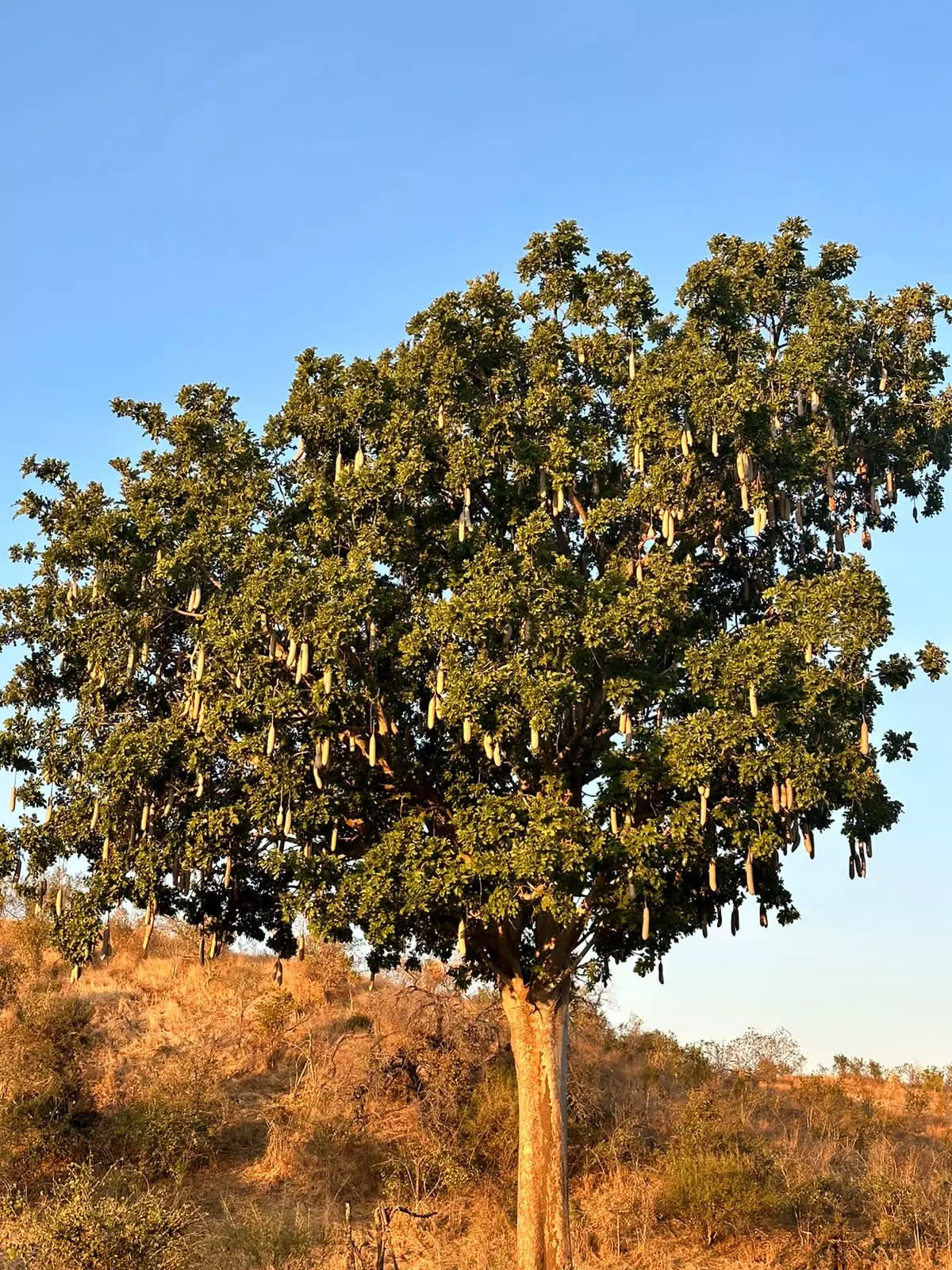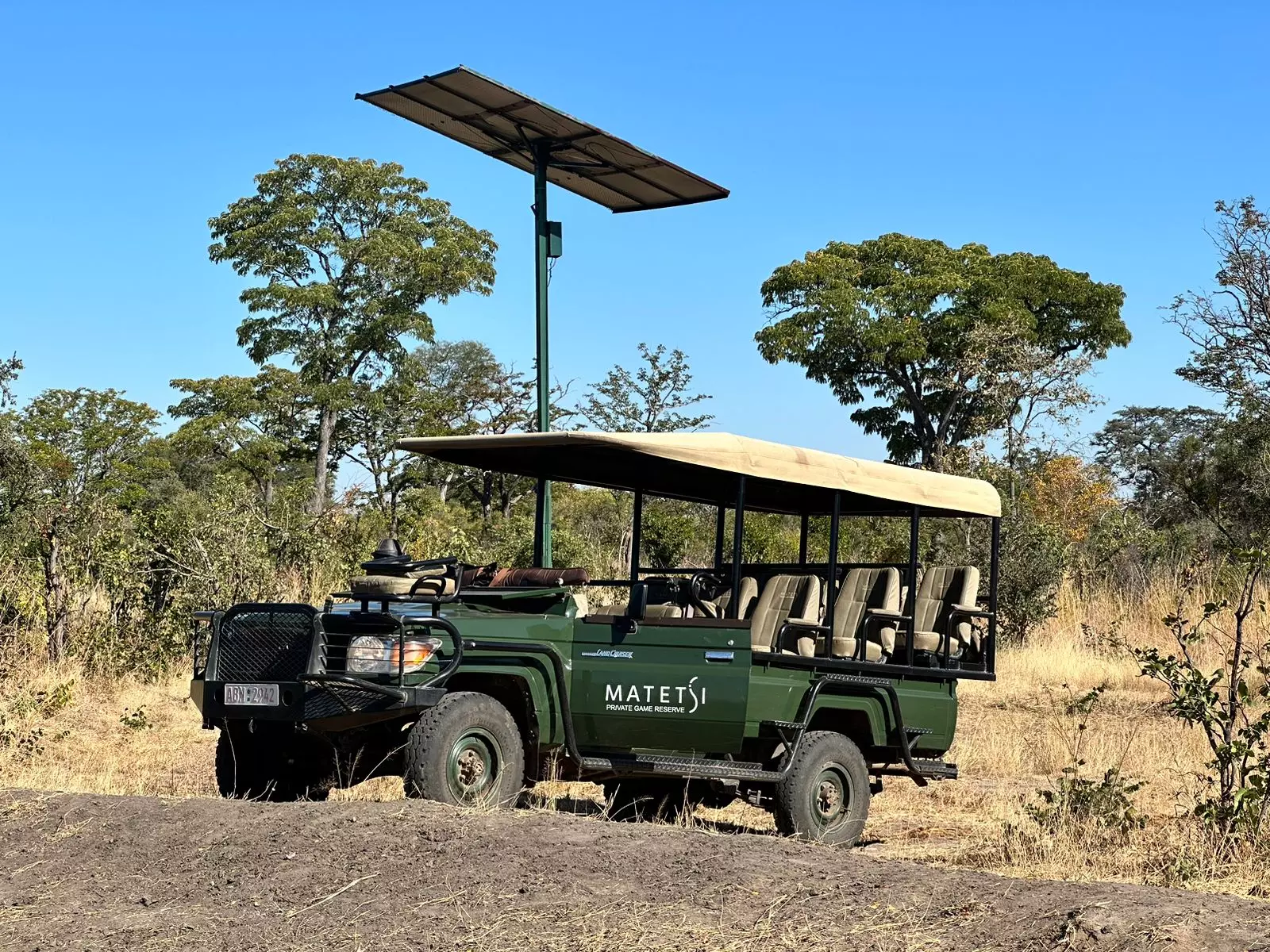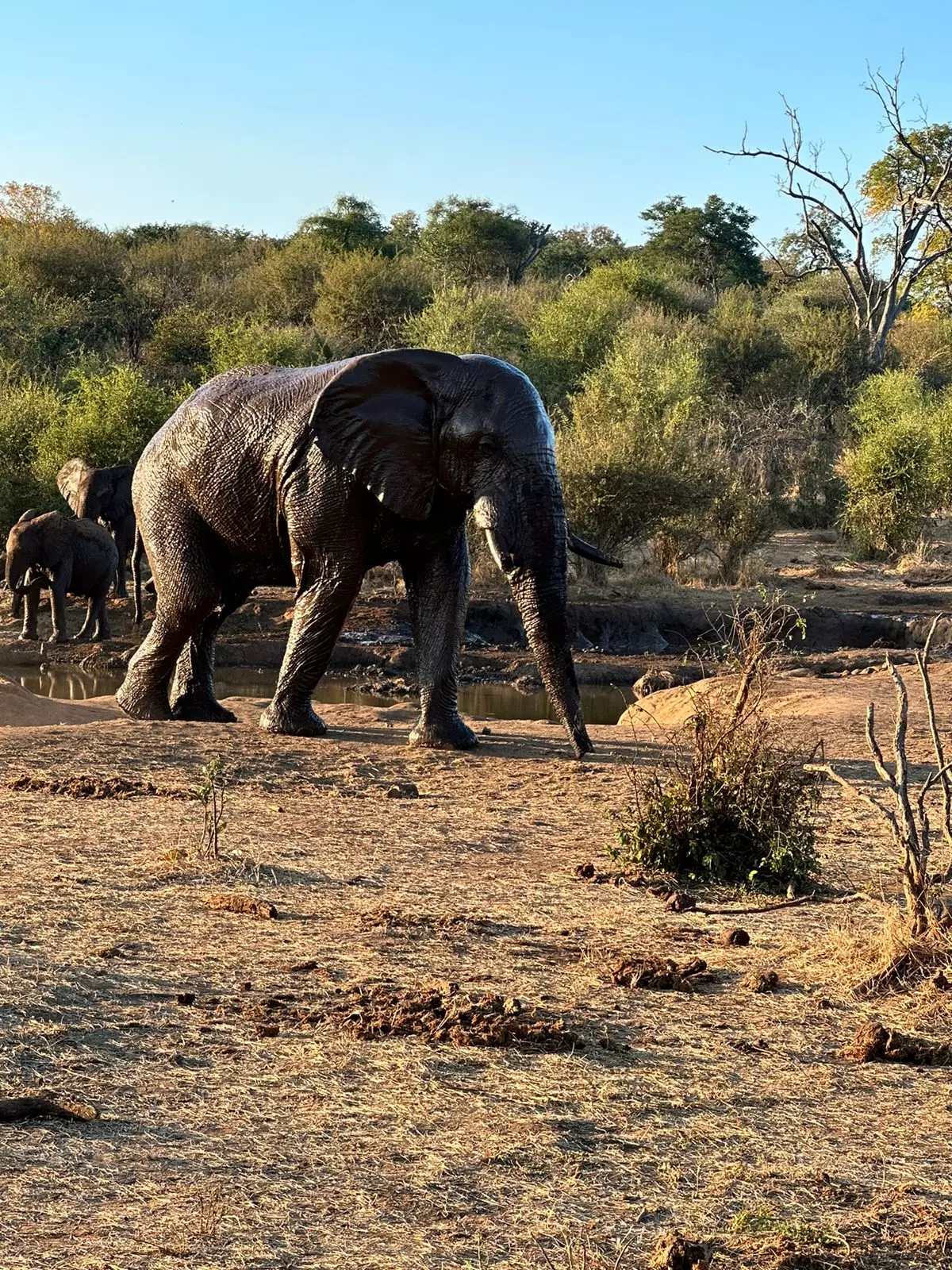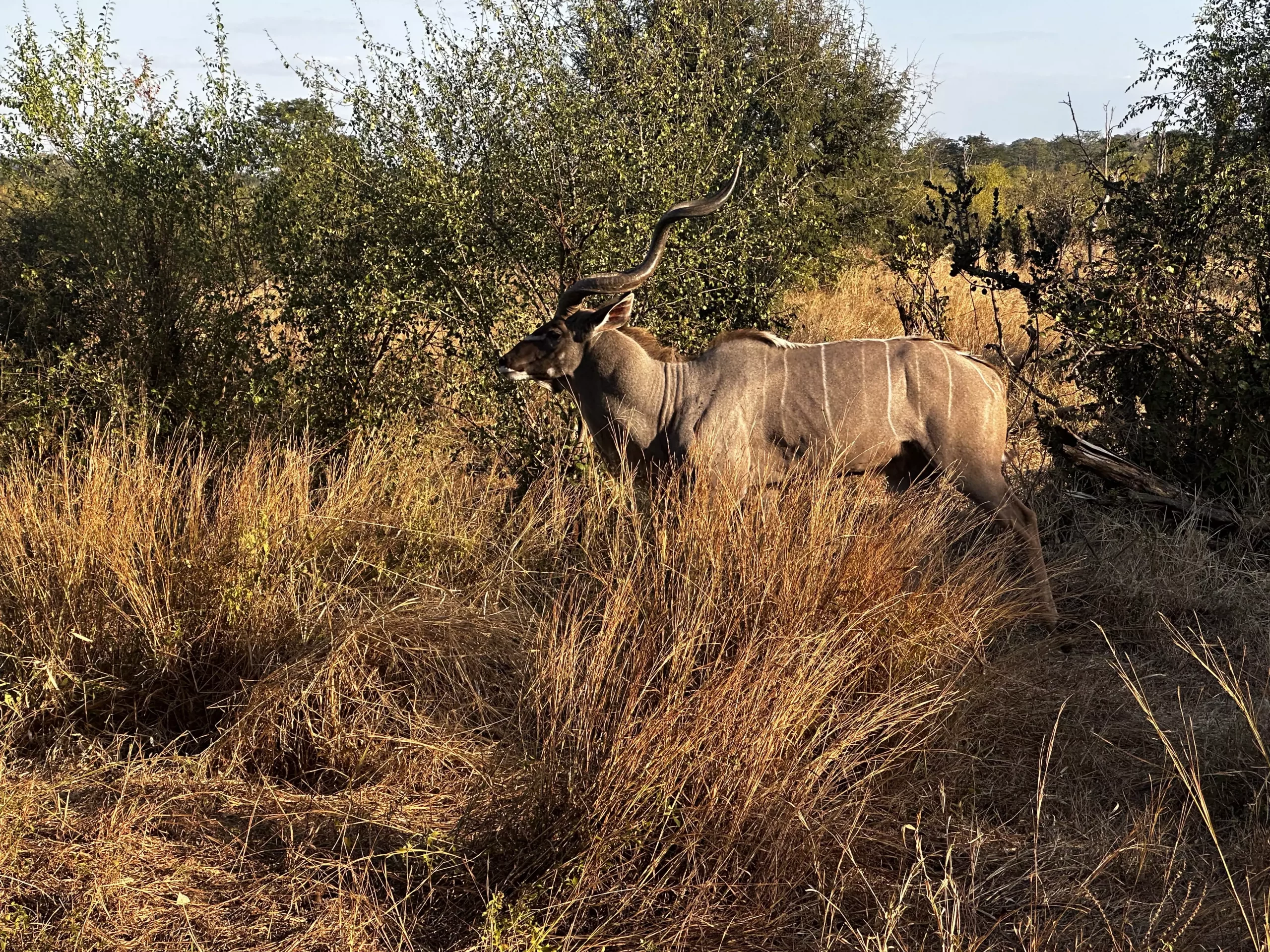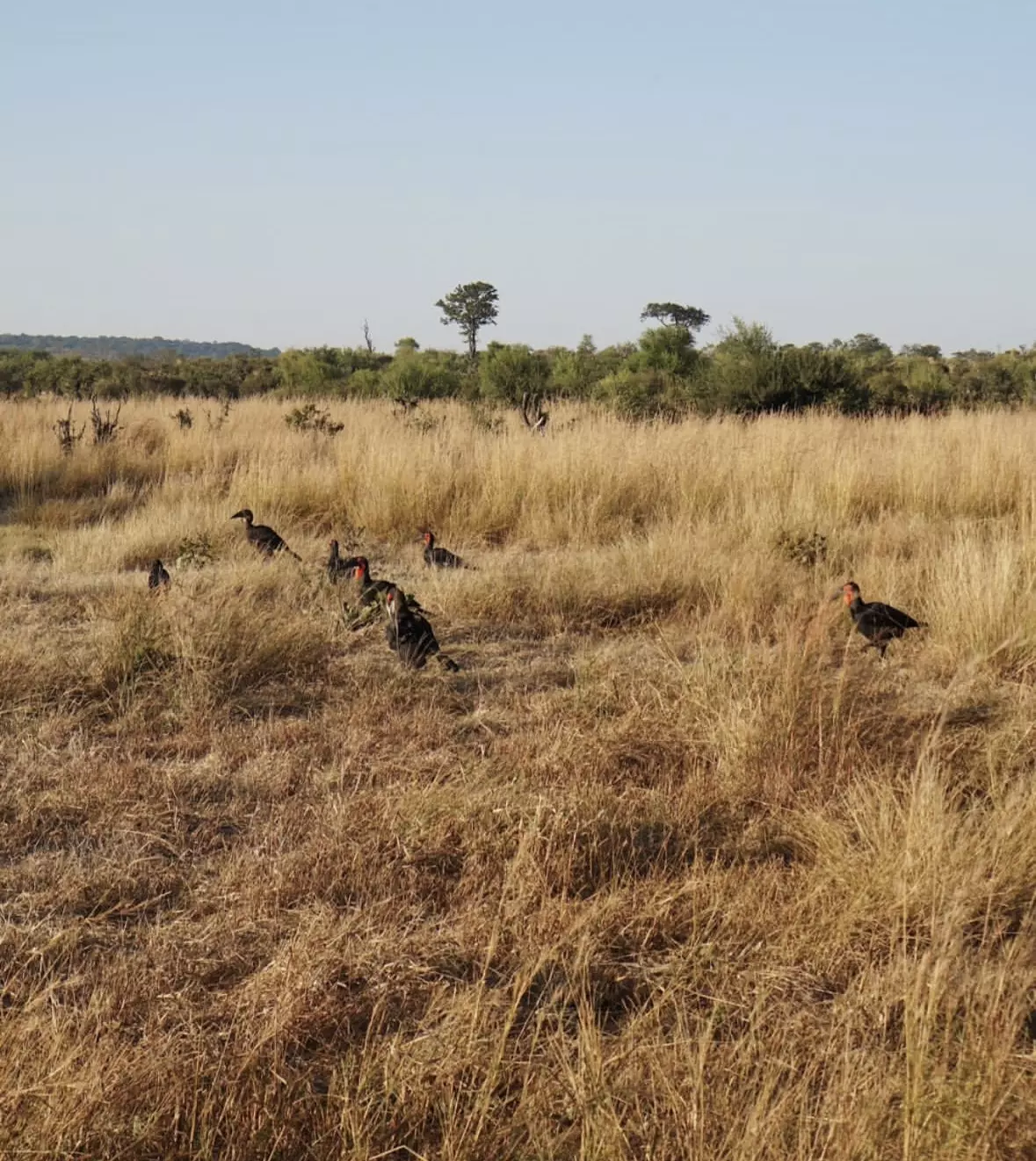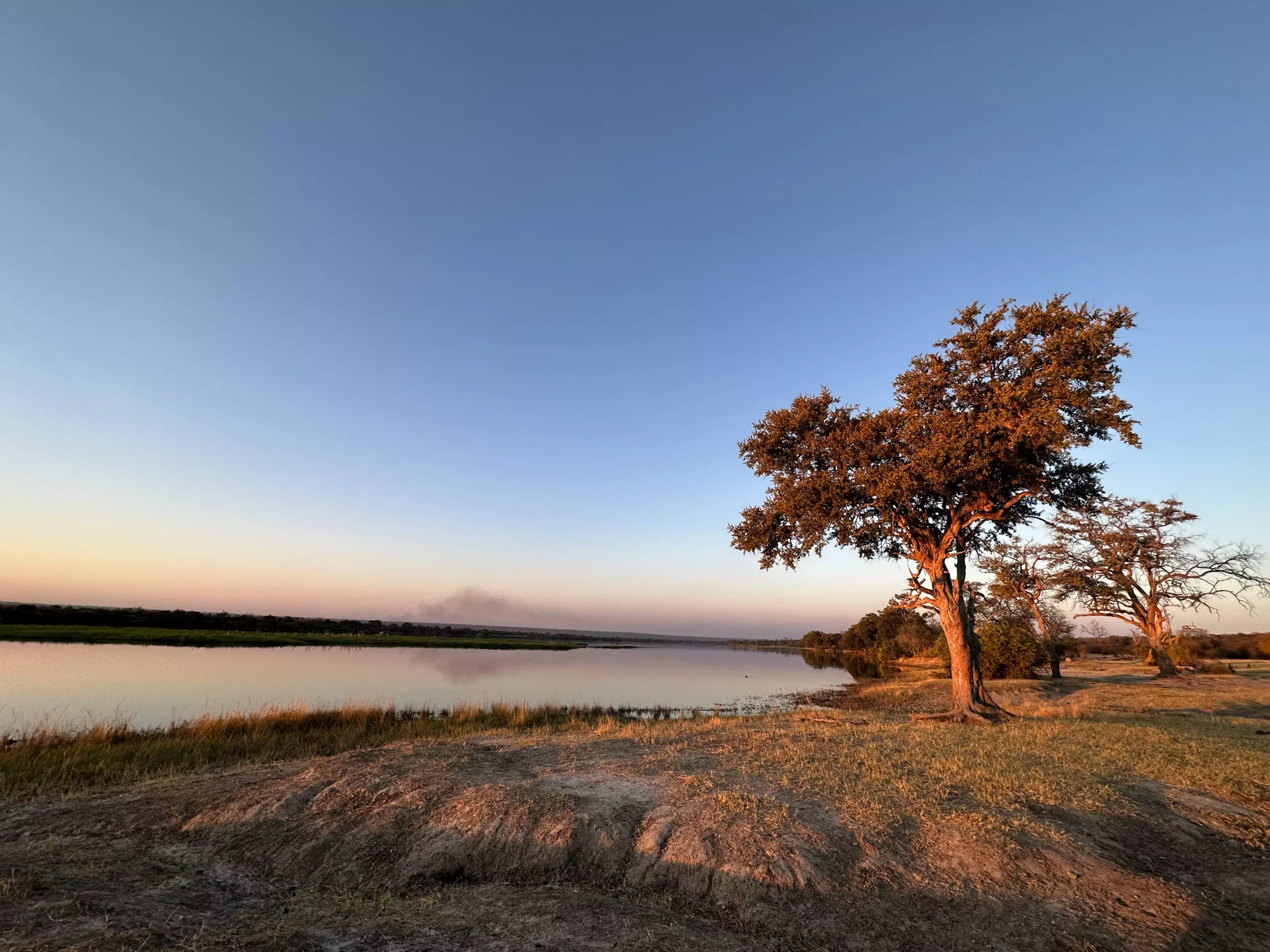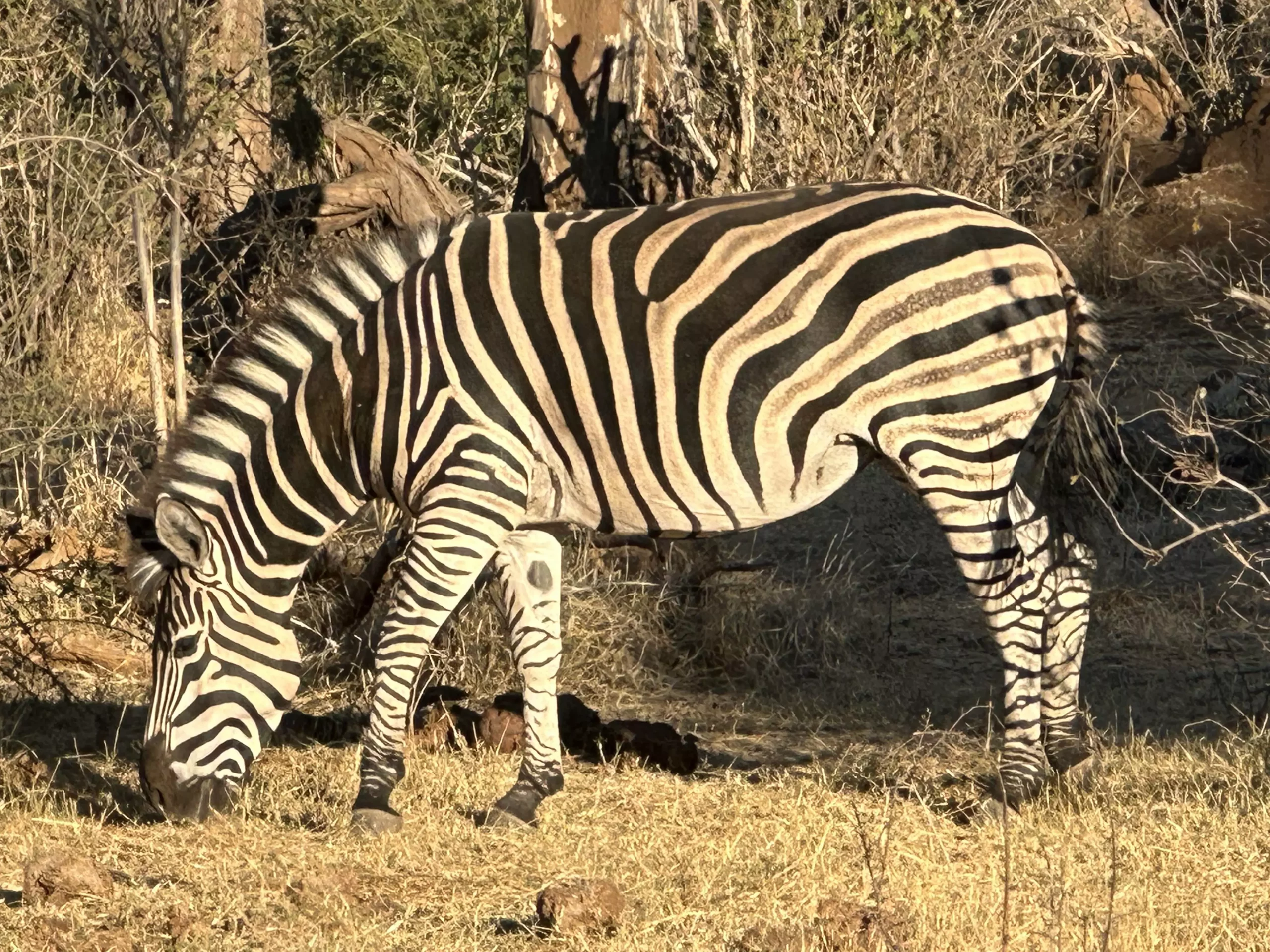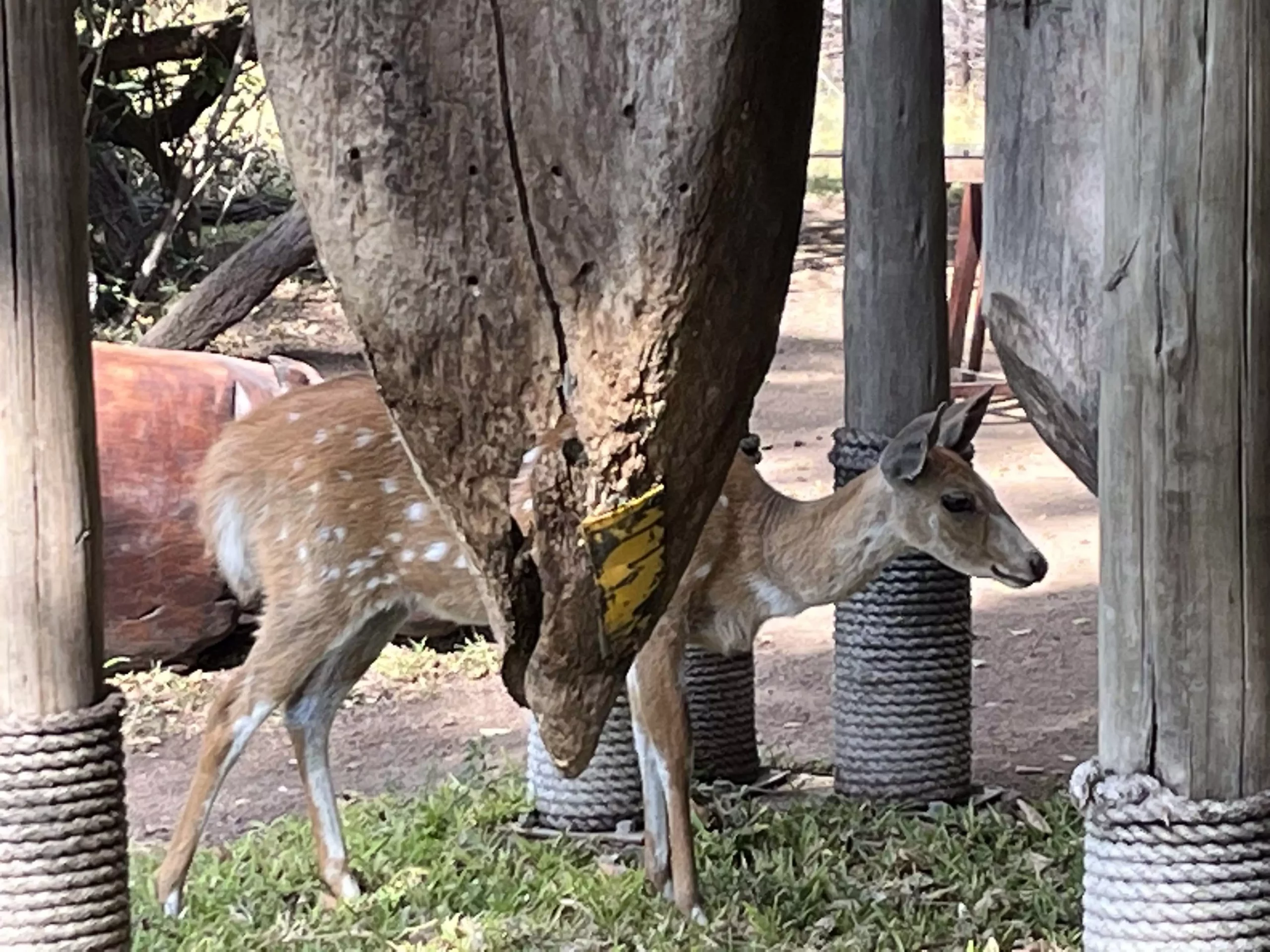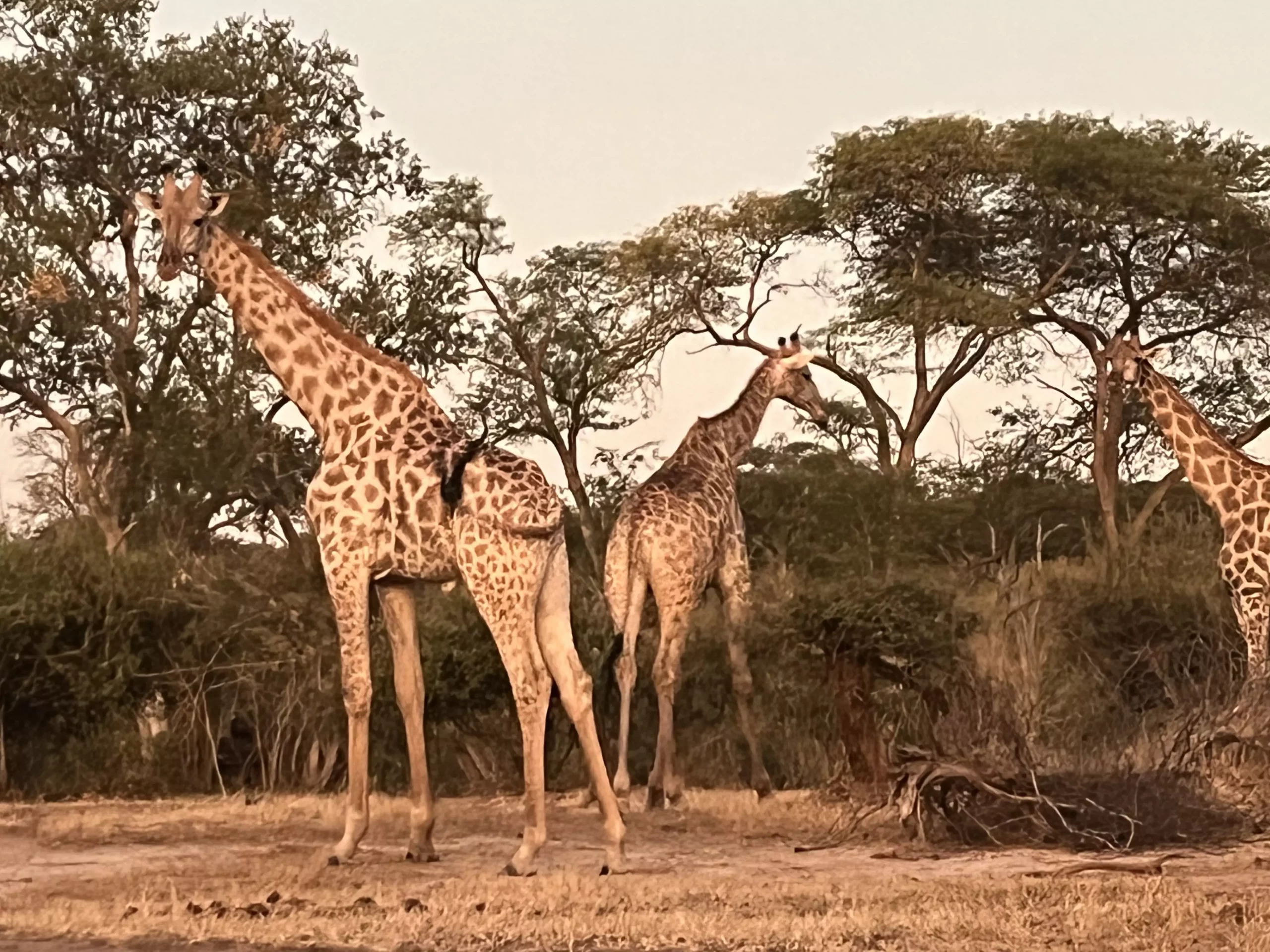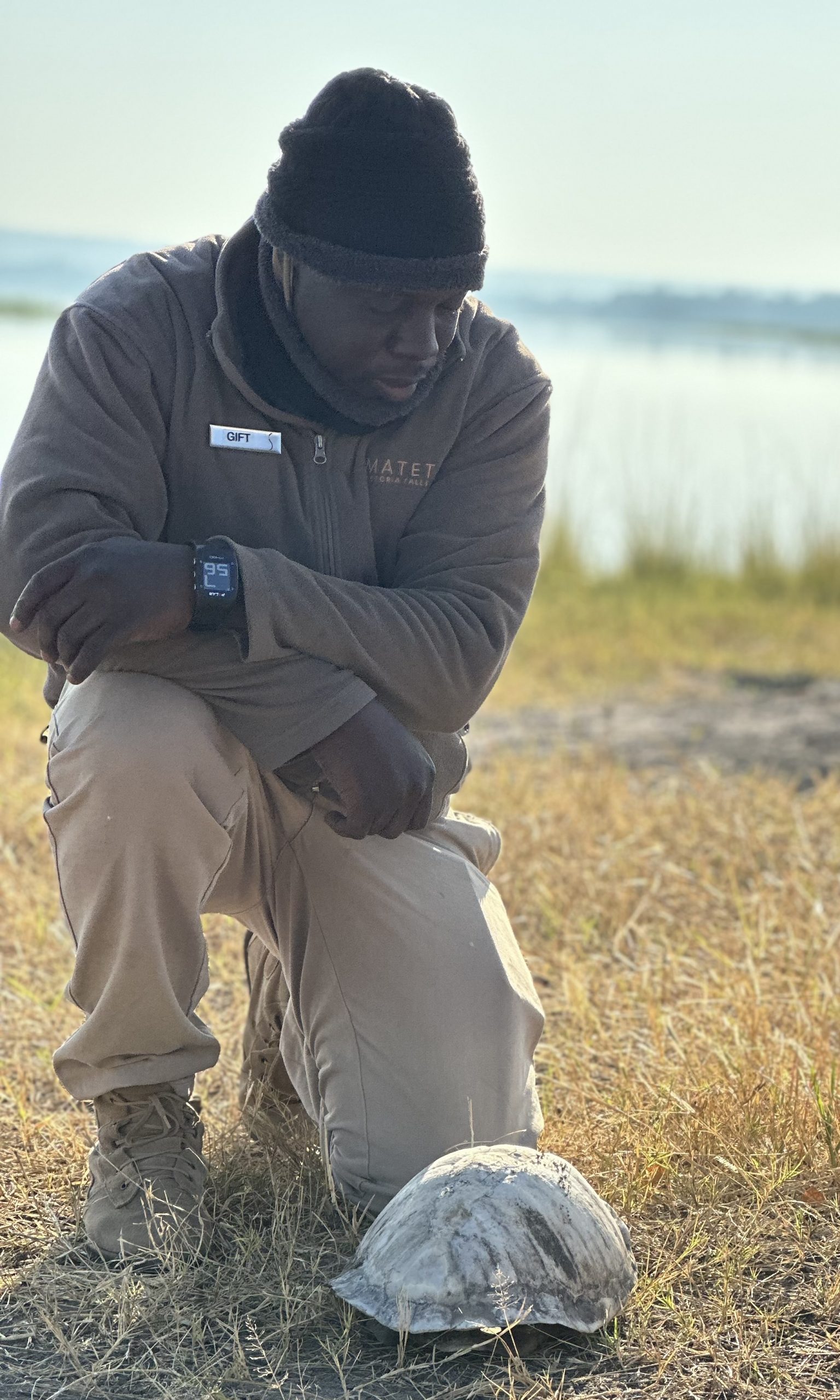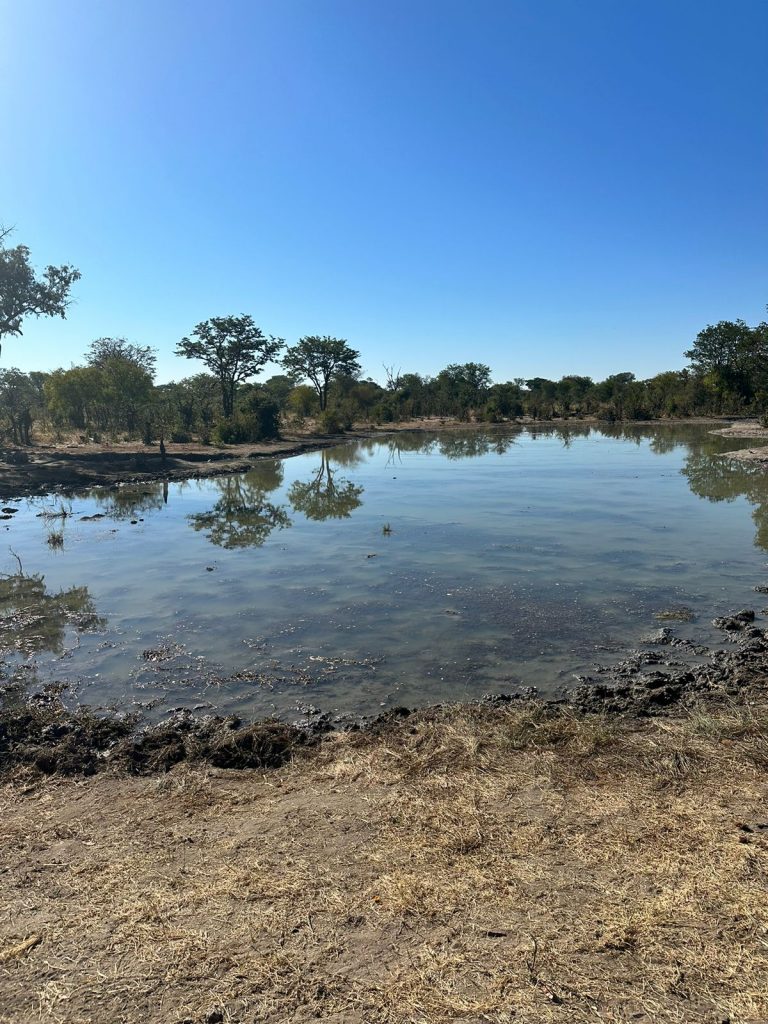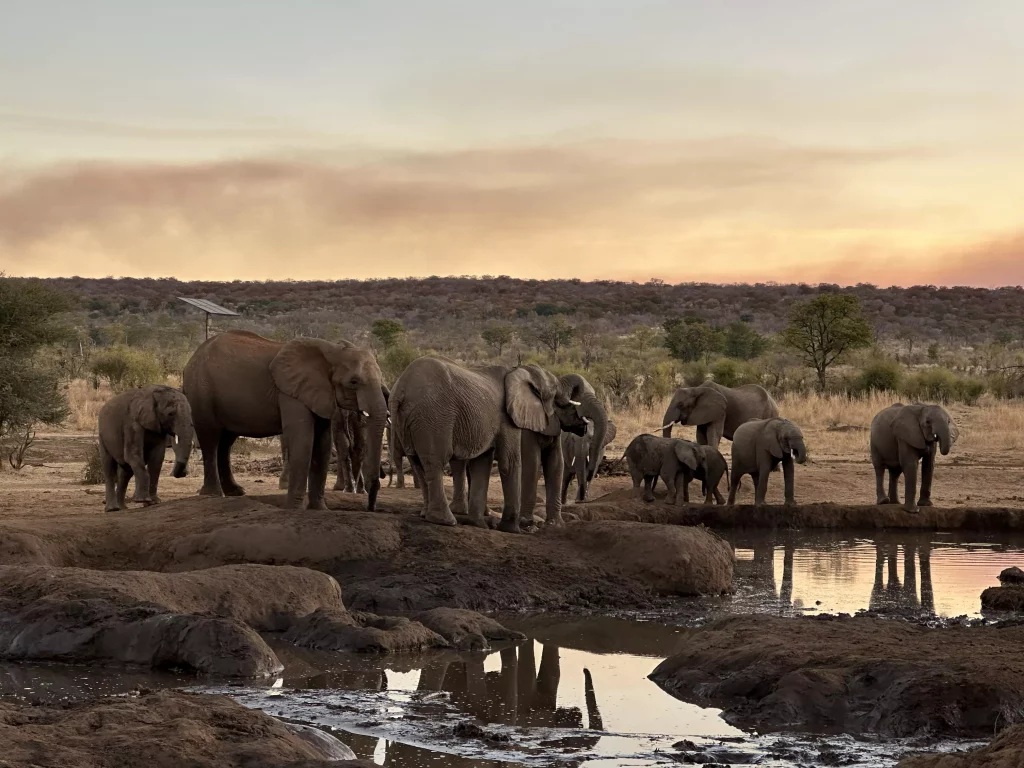
Winter arrived quietly this year, taking longer than usual to settle in as autumn seemed set to enjoy an extended stay in this part of Zimbabwe. We were fortunate to enjoy balmy daytime temperatures throughout the month of May, which, when combined with the thinning of the bush, created idyllic safari conditions for our guests.
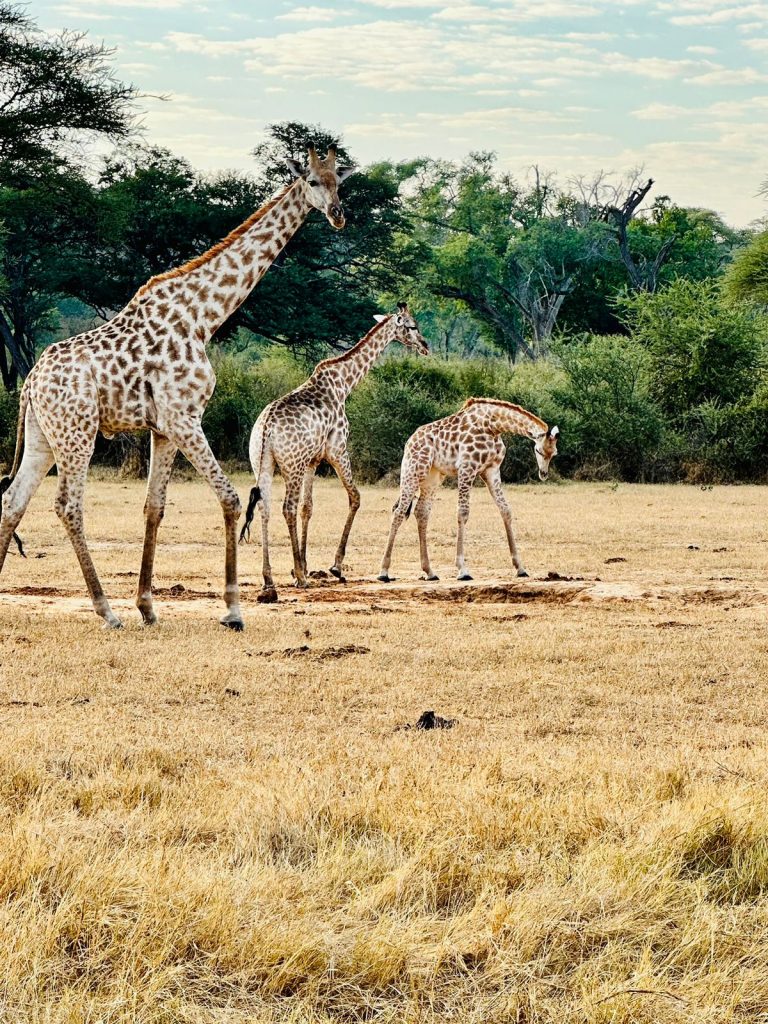
One of the unexpected quirks of the slow start to winter is that insect activity remained high, giving the birds and reptiles of the reserve a veritable all-you-can-eat buffet during a season when pickings can be slim.
As of June, however, the weather turned crisp and cool, becoming progressively chillier as the weeks wore on. By the beginning of July, it had become bitterly cold and a few extra layers – and shots of Amarula! – were required on morning and evening game drives.
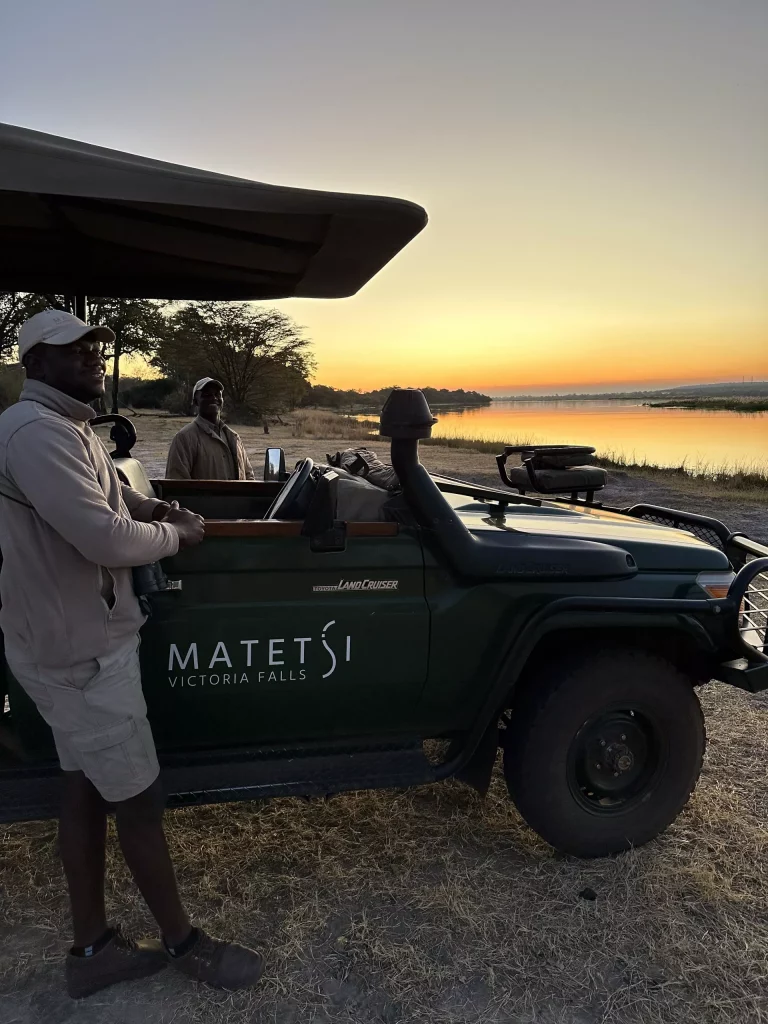
The lack of rain (the wet season here is generally between November and April) brings with it the lowering of water levels in the Zambezi. As the waters slowly recede, hidden islands emerge from the depths, along with new channels carved when the mighty river was in full flow. Hippos are seen basking on the new sandbanks in front of the lodge while herds of elephant now have safe passage across the river to enjoy the fresh reeds on the opposite side.
Elsewhere in the reserve, visibility has been excellent, thanks to the bare trees that characterise the landscape at this time of year. Usually-elusive species like kudu, which can easily vanish into thickets of sickle and jessebush in the summer, are much easier to see.
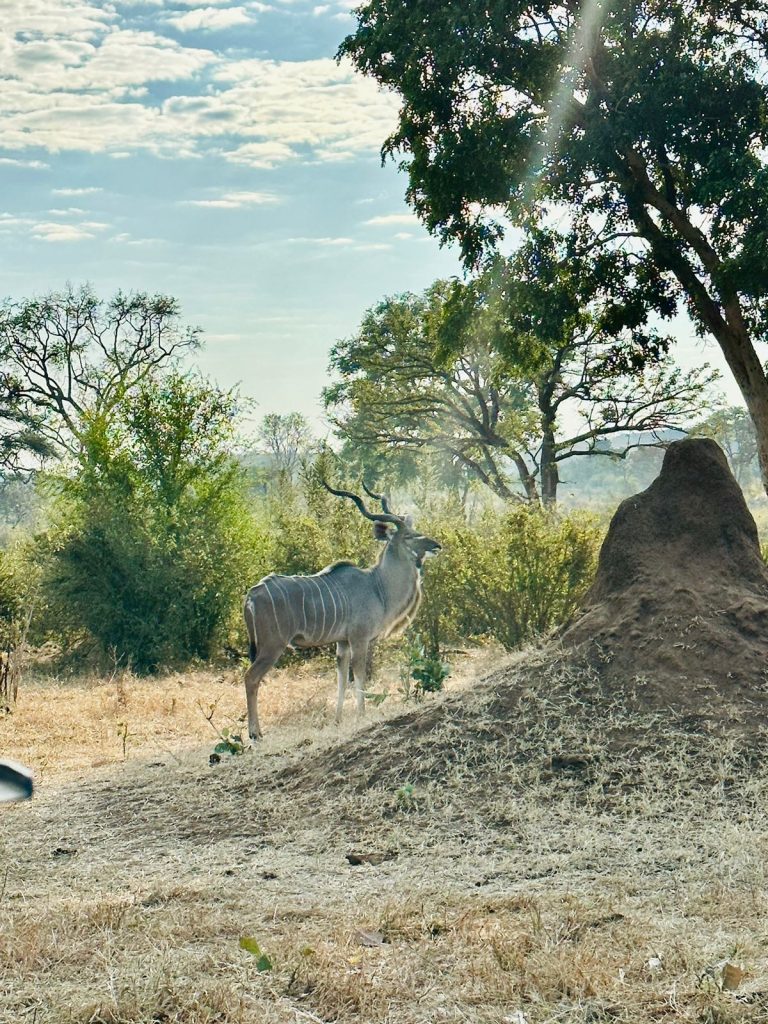
Their regular appearance in the weekly sightings reports brings much joy to the team, especially as they are often accompanied by the leggy fawns and in larger numbers than previous years. Huge herds of buffalo, numbering in their hundreds, have also been sighted with pleasing regularity, while the vlei is dotted with wildebeest and zebra enjoying the abundant fresh water.
Fire is always a threat at this dry time of year, which is why it is also the season in which we maintain our firebreaks. The team was called upon to assist with a big wildfire beyond the eastern boundary of the reserve which took eight days to contain! It was a timely reminder of the devastating power of nature and the importance of working with it, not against it, to nurture biodiversity.

Wildlife Movements & Sightings
Winter was a challenging time for one of the resident lion prides at Matetsi Private Game Reserve. In May, two interloping males ousted Bluetooth, the dominant male, from his territory, causing him to flee westwards beyond our boundary. The pair’s arrival also posed a serious threat to the survival of the three subadult cubs in the pride, who disappeared shortly afterwards with their mother.
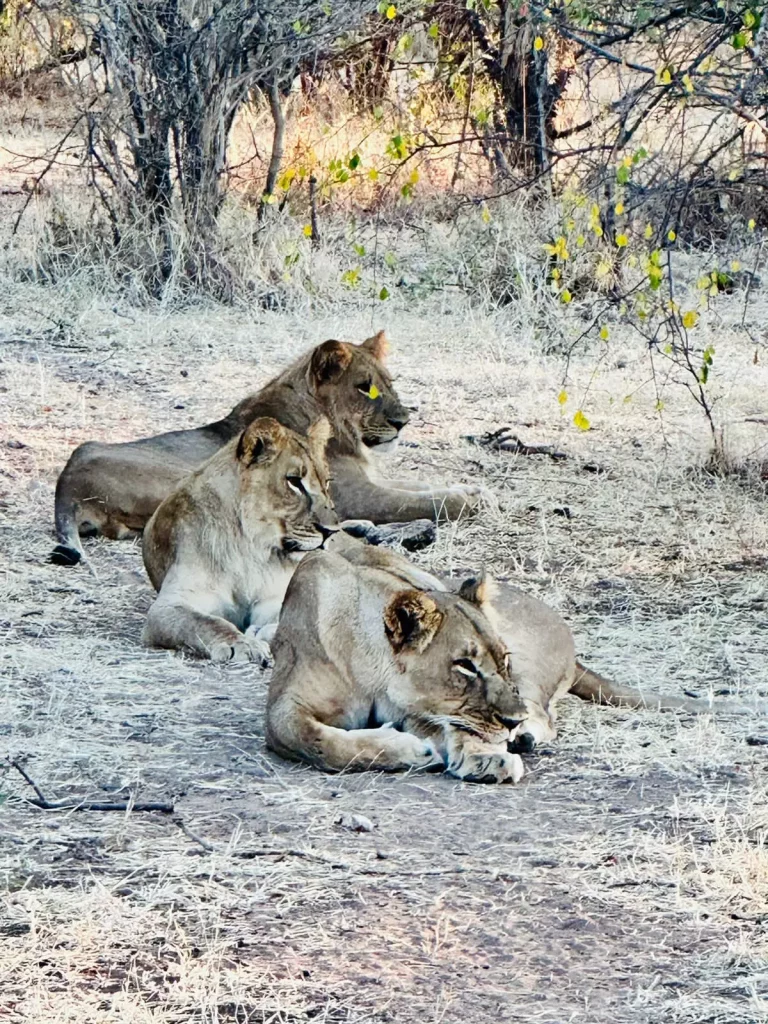
Two months later, we were happy to spot the mother and her cubs again, back hunting in their old territory. Unfortunately, as the original pride had since dispersed, she was unable to reunite with them but seems to be relieved to be “home” again.
Meanwhile, July also brought with it a surprise sighting of Bluetooth who seemed to be testing the waters for a return – a plan which was put paid to by the two rogue males when they heard him calling for the pride. He was last seen heading east into Zambezi National Park.
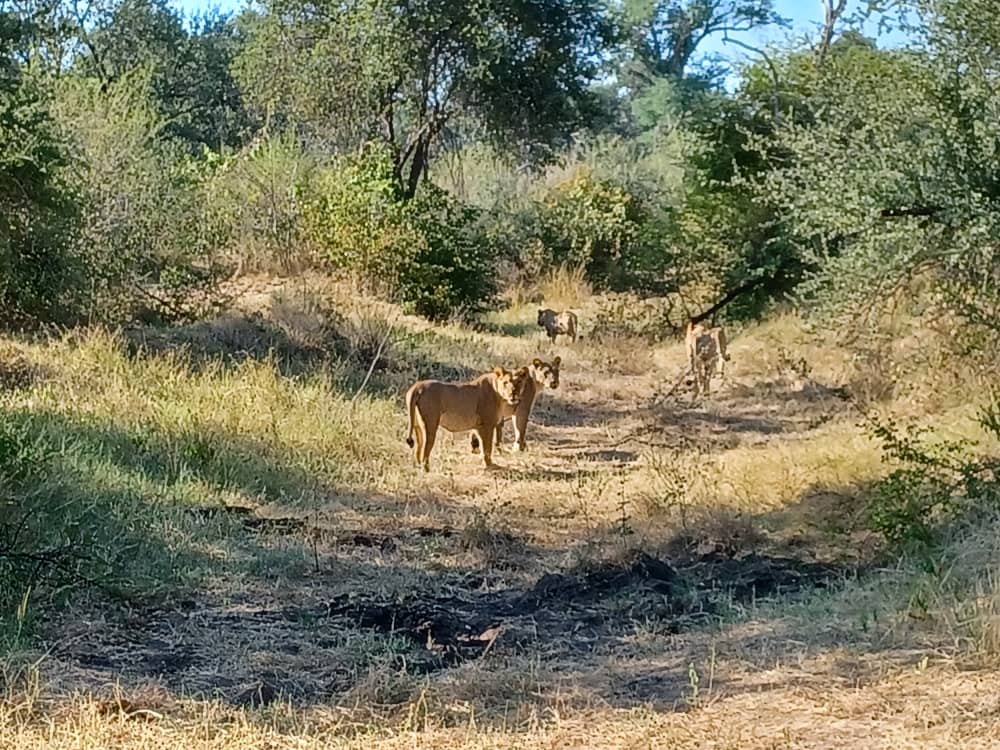
Among the other interesting and particularly noteworthy sightings this season were:
- Three wild dogs – one of Africa’s most endangered animals – hunting and catching a big male impala
- Two male lions and a female killed a baboon on Shumba South. One female baboon and her baby were stuck in a jackal berry as the lions feasted on her fellow troop mate under that tree. Fortunately the baboon sneaked through and managed to escape with her baby.
- The same three lions killed a buffalo cow and her calf close to Namaqua Pan and spent about three days with a countless number of vultures picking up some scraps together with black-backed jackals.
- An interesting sighting of a baboon and an impala jostling for a sausage pod around Namakana. It should be noted that the baboon won the contest.
- There was a big fight between Bluetooth and the two brothers as they were seen with a lot of scratches on their faces and there was loud vocalisation throughout the night
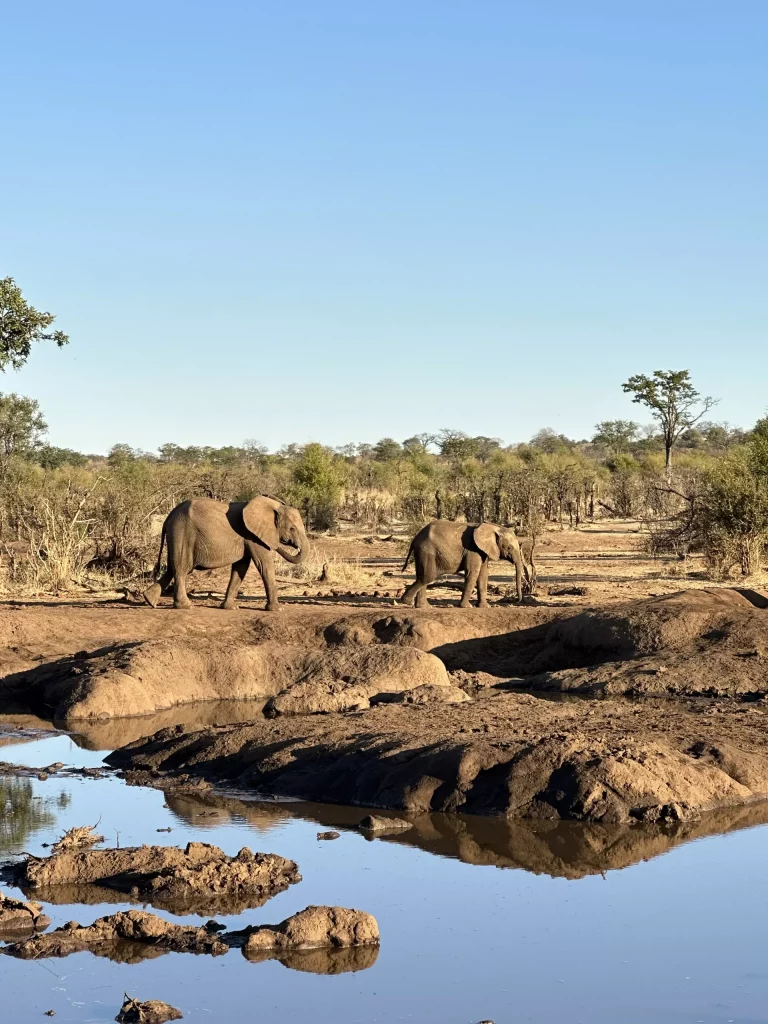
- A southern red-billed hornbill was seen fighting with a goshawk as the accipiter unsuccessfully tried its luck with the hornbill
- Three wild dogs spotted in a standoff with a big male leopard. Zebras came running and disturbed the match, luckily for the wild dogs who should know better than to tangle with a leopard.
- A fascinating (albeit sad) sighting of a sparrowhawk hunting a Meyer’s parrot, who, in a desperate attempt to outsmart the bird of prey, dived into Namaqua pan and drowned. The parrot’s futile attempts to escape the water were also impatiently observed by a hungry troop of baboons at the water’s edge who no doubt thought they were getting a free meal.
- Hungry elephants digging for roots and eating tree bark in their search for sustenance among the leafless vegetation. While normal behaviour for elephants, this resulted in one particularly tragic incident where a calf was crushed by a falling baobab as the herd was trying to extract the nutritious wood pulp unside the tree. However, as is the nature of things, the carcass subsequently provided a sustained source of food for the lions, hyenas, vultures, jackals and other species seen feeding on it in the following days.
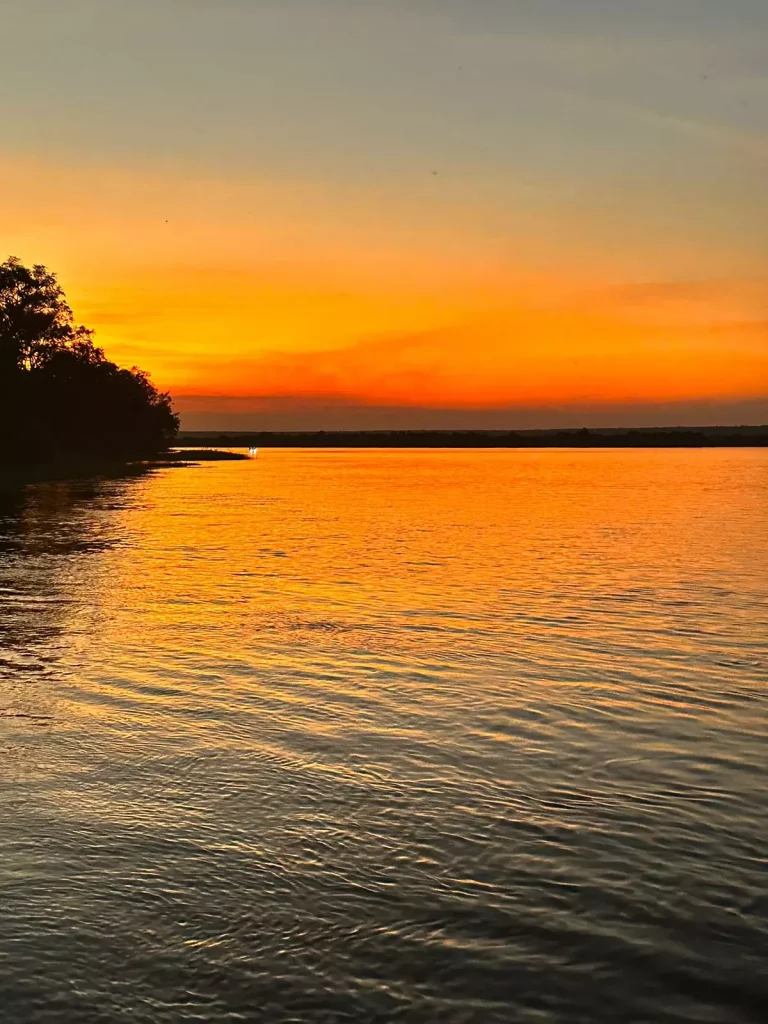
Victoria Falls
Our Autumn Wildlife Report alluded to the impending arrival of a secondary peak in the water levels of the Zambezi towards the end of May. Sure enough, Victoria Falls was once again in full flow by late May before the seasonal recession brought the Falls to mid-water, as is expected at this time of year.
The curtain of water is still falling across the full width of the Falls but with a much smaller spray cloud, making for excellent sightings and photographic opportunities of this Natural Wonder at ground level as well as from the sky.
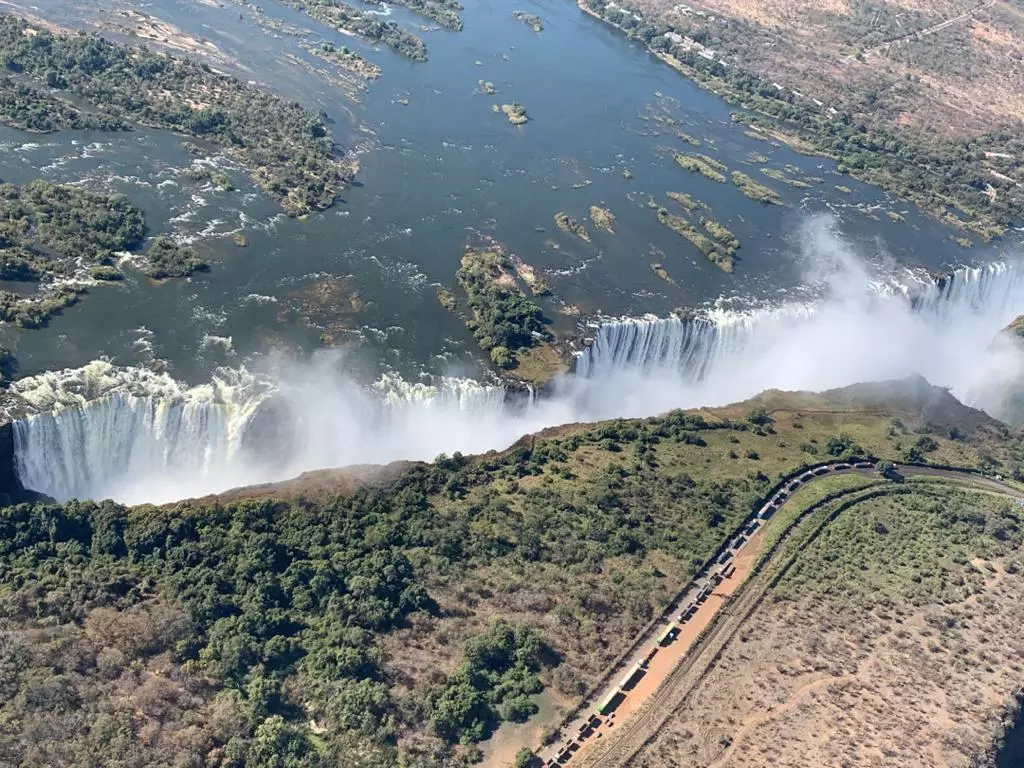
Conservation Update
Protecting 136,000 acres of unfenced wilderness, home to more than 400 bird and mammal species, is no mean feat. Amaganyane – our in-house anti-poaching unit named for the indomitable wild dog – undertake this task 24/7/365, keeping safe the habitat we have painstakingly rehabilitated and the remarkable wildlife that now flourish within it.
We were honoured in July when Amaganyane were recognised for their “outstanding and impactful work” by the Virtuoso Sustainable Tourism Leadership Awards, earning their spot as a Top 3 Finalist in the “Protecting our Planet” category among 185 total submissions. We are especially proud of this dedicated team of wildlife guardians to have been shortlisted alongside Singita and Jade Mountain; two conservation-focused brands for whom we have the greatest admiration and respect.
Guest Testimonial
“We traveled as a family of five to Southern Africa and Matetsi was our first lodge stay. What a way to kick off our Africa adventure. The safaris, sunset river cruise, visit to Victoria Falls and the market and our Village experience were all amazing. This coupled with the great food, warm hospitality and great rooms on the incredible Zambezi River made for a truly special and memorable stay. Everyone was so friendly and helpful. We hope to return one day to re-capture that Matetsi magic!” – Allen, June 2023
